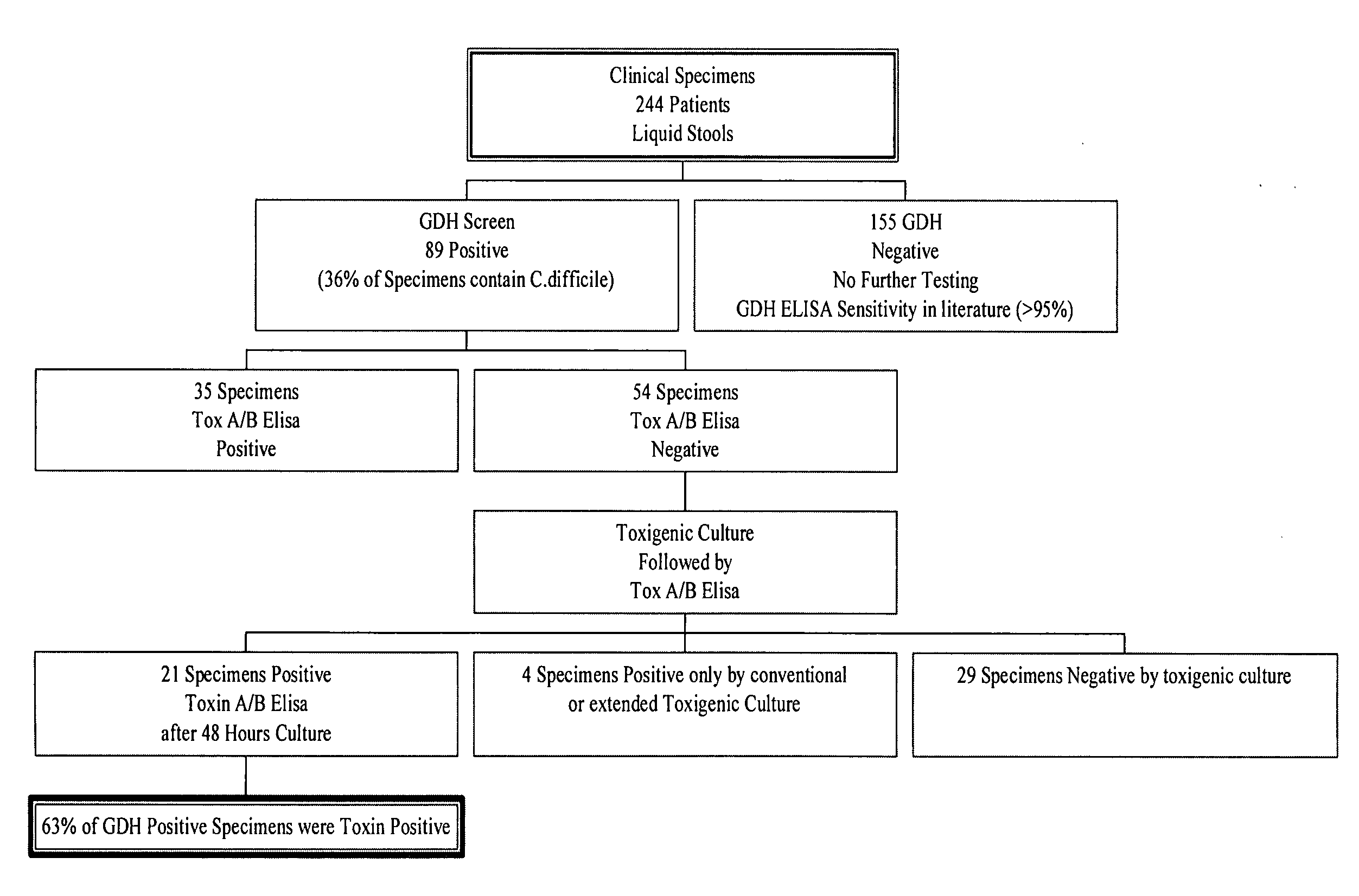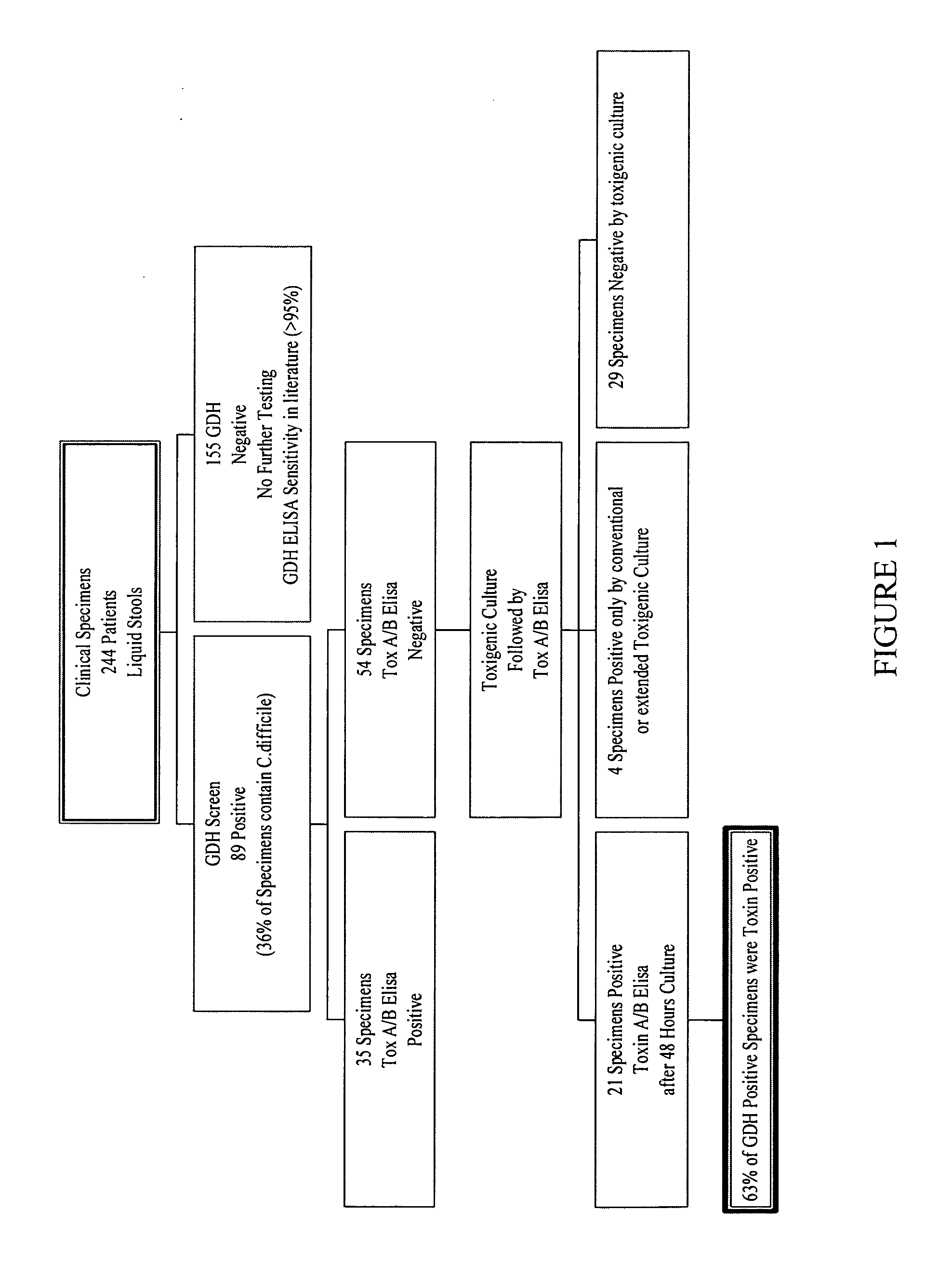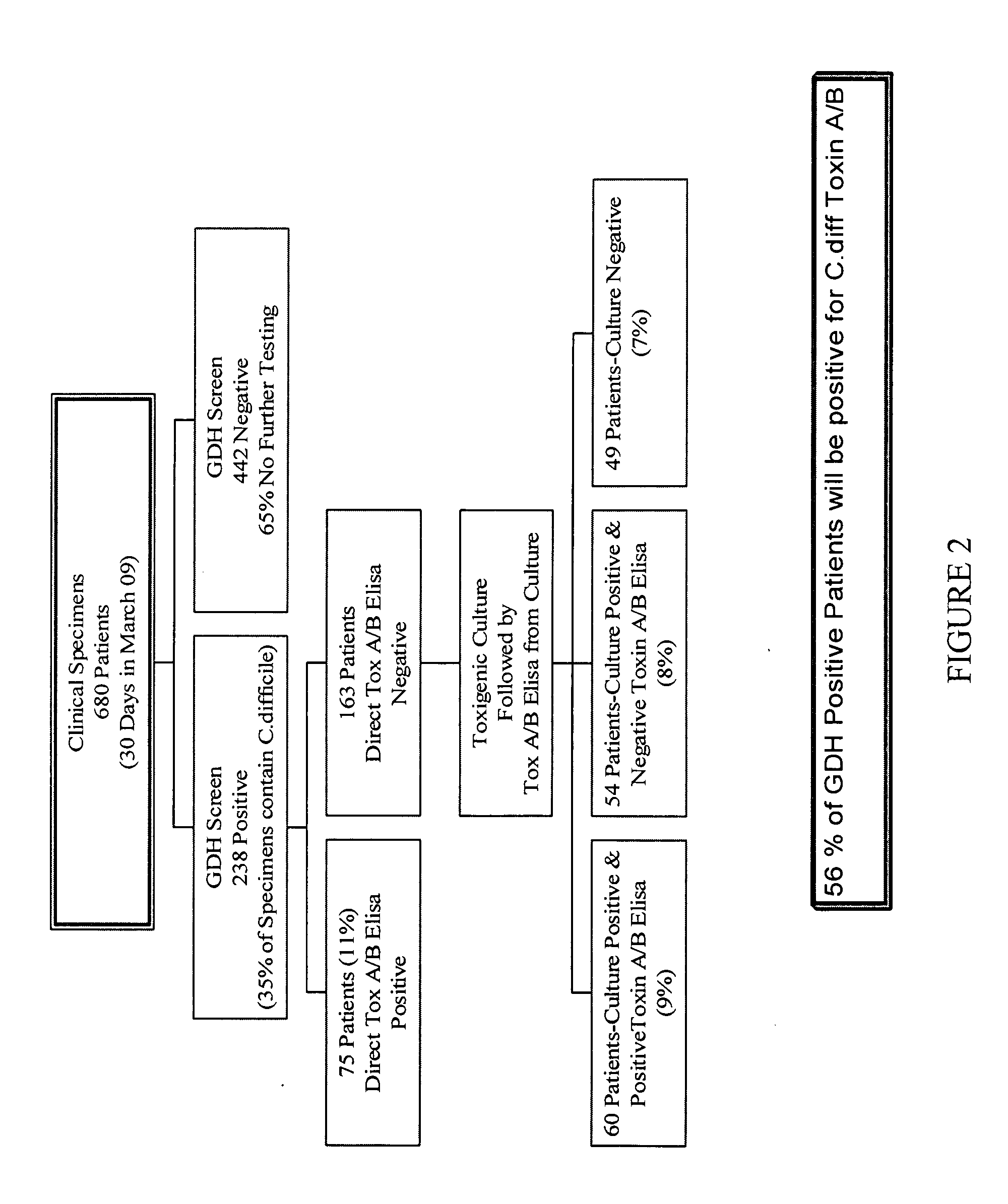Cultures and protocols for diagnosis of toxigenic clostridium difficile
a technology of clostridium difficile and culture protocols, which is applied in the field of culture protocols and protocols for the diagnosis of toxigenic clostridium difficile, can solve the problems of inability to detect i>c. difficile/i>, current treatments are plagued by a 20-50% recurrence rate, and are no longer acceptabl
- Summary
- Abstract
- Description
- Claims
- Application Information
AI Technical Summary
Benefits of technology
Problems solved by technology
Method used
Image
Examples
Embodiment Construction
[0016]The present invention provides a culture medium for Clostridium difficile comprising Cooked Meat Medium with glucose; yeast extract; taurocholate; cycloserine; and cefoxitin. Optionally, the culture medium also includes Hemin and / or Vitamin K. In one embodiment, the culture medium consists essentially of the indicated components. Preferably, taurocholate is present in a concentration of 0.05-0.1%, or more preferably 1.0 mg / mL. Preferably, cycloserine is present in a concentration of 200 to 400 μg / ml, or more preferably 250 μg / ml. Preferably, cefoxitin is present in a concentration of 8 to 32 μg / ml, or more preferably 16 μg / ml. Preferably, yeast extract is present in a concentration of 2 to 10 gm / liter, or more preferably about 5 gm / liter.
[0017]The invention also provides a method for diagnosing the presence of toxigenic Clostridium difficile in a sample, comprising:
[0018]a) treating the sample with alcohol;
[0019]b) incubating the alcohol-treated sample in a medium comprising C...
PUM
| Property | Measurement | Unit |
|---|---|---|
| concentration | aaaaa | aaaaa |
| concentration | aaaaa | aaaaa |
| concentration | aaaaa | aaaaa |
Abstract
Description
Claims
Application Information
 Login to View More
Login to View More - R&D
- Intellectual Property
- Life Sciences
- Materials
- Tech Scout
- Unparalleled Data Quality
- Higher Quality Content
- 60% Fewer Hallucinations
Browse by: Latest US Patents, China's latest patents, Technical Efficacy Thesaurus, Application Domain, Technology Topic, Popular Technical Reports.
© 2025 PatSnap. All rights reserved.Legal|Privacy policy|Modern Slavery Act Transparency Statement|Sitemap|About US| Contact US: help@patsnap.com



